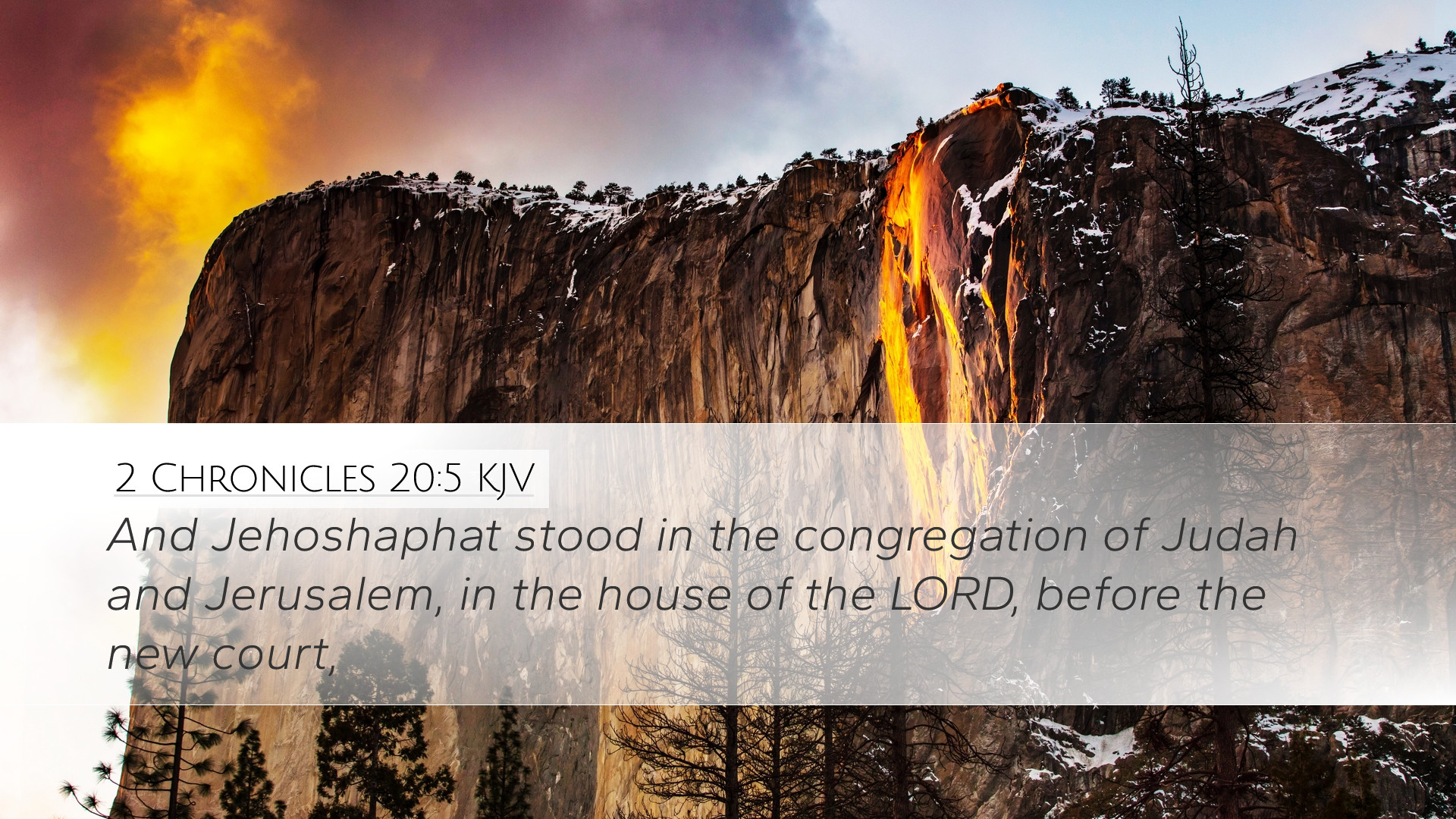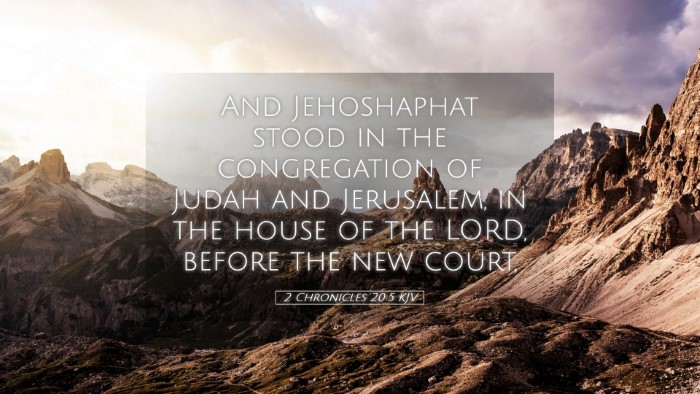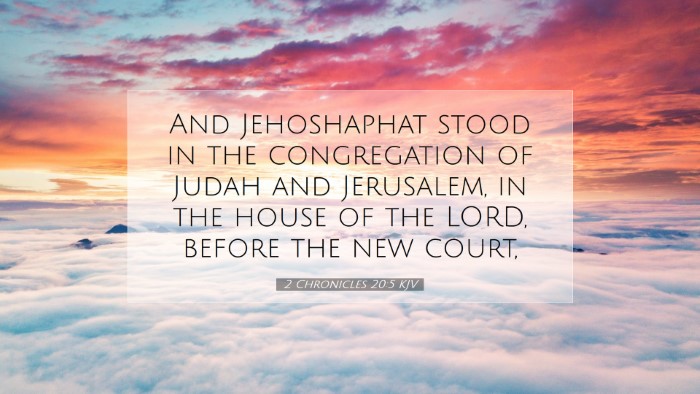Commentary on 2 Chronicles 20:5
Verse: "And Jehoshaphat stood in the congregation of Judah and Jerusalem, in the house of the LORD, before the new court." (2 Chronicles 20:5)
Introduction
The verse encapsulates a moment of profound spiritual leadership as Jehoshaphat, the king of Judah, stands before his people and God in a time of national crisis. This passage serves as a foundational insight into the themes of worship, leadership, and divine reliance inherent in the narrative of Israel's history.
Contextual Background
To fully appreciate this moment, it is essential to understand the historical and literary context of 2 Chronicles 20. Following the establishment of Judah’s political stability, Jehoshaphat faces an impending invasion from a coalition of enemy nations. This dire threat compels him to seek the Lord earnestly, showcasing his dependence on divine intervention.
Analysis of Jehoshaphat's Leadership
Jehoshaphat’s actions exemplify qualities that are vital for spiritual leaders:
- Courage: Standing before the congregation with faith amid adversity demonstrates remarkable courage.
- Public Worship: His boldness in leading the people in prayer underscores the belief that communal worship is integral to seeking God's aid.
- Inclusivity: By gathering both Judah and Jerusalem, he acknowledges the unity of his kingdom in the effort of approaching God.
The Significance of 'In the House of the LORD'
Jehoshaphat stood "in the house of the LORD," a sacred space underscoring the seriousness of his appeal. Public domain commentaries note that this phrase represents:
- Holiness: The temple symbolizes God's presence, reminding the people of His holiness and moral excellence.
- Access to God: The location emphasizes that the community has a direct line of communication with their Creator, reinforced by the temple rituals and sacrifices.
- Tradition: Standing in the temple adheres to Israel's rich heritage of reliance on God, marking a powerful return to foundational faith practices.
Spiritual Implications for the Congregation
When Jehoshaphat stands before the congregation, it conveys profound lessons for modern-day believers:
- Collective Reliance: The king’s intention to lead the people to God signifies the importance of collective worship in times of trouble.
- Prayer as a Community: Jehoshaphat’s decision to gather everyone illustrates the power of communal prayer which can amplify the faithful's voice before God.
- Role of Leadership: Leaders are called to be examples for their flock, as Jehoshaphat demonstrates earnestness in seeking divine assistance.
Practical Applications
The commentary offers several modern-day applications based on Jehoshaphat's actions:
- Encouraging Prayer Meetings: Pastors and leaders should foster environments for prayer and corporate worship, particularly during uncertain times.
- Emphasizing God’s Sovereignty: Reminding ourselves and others that God is in control can bring peace in the midst of chaos.
- Modeling Faith: Leaders should exemplify reliance on God, encouraging their communities to follow suit in faith-filled living.
Theological Reflections
Analyzing this verse from a theological perspective brings forward several key ideas:
- Sovereignty of God: The narrative drives home God’s omnipotence as the ultimate protector of His people.
- The Nature of Worship: Worship is essential during crisis, reinforcing the relationship between humanity and the divine.
- Community and Covenant: The gathering represents the covenant community, showing that collective identity in faith is crucial during trials.
Conclusion
2 Chronicles 20:5 provides a rich tapestry for understanding the intersection of leadership, worship, and divine reliance. Jehoshaphat's call to unified prayer and his earnest stand in the temple reveal enduring principles for today's church. For pastors, students, theologians, and Bible scholars, these insights offer a pathway to deepening faith and fostering community engagement as they navigate both personal and collective challenges in spiritual life.


